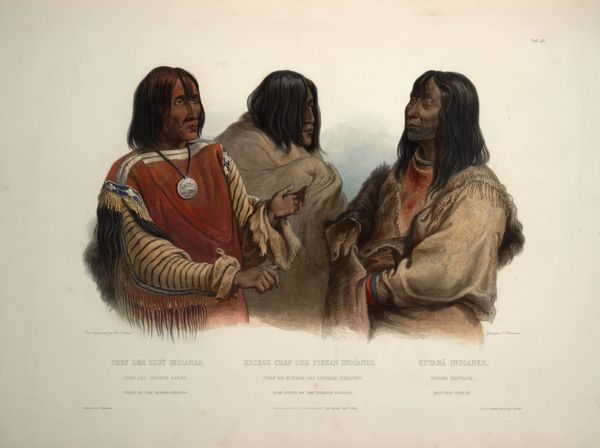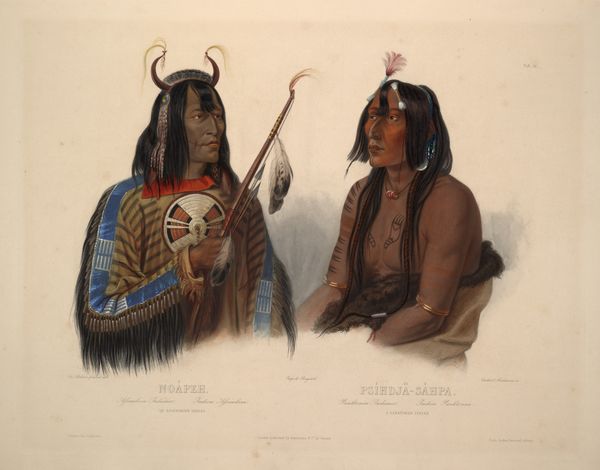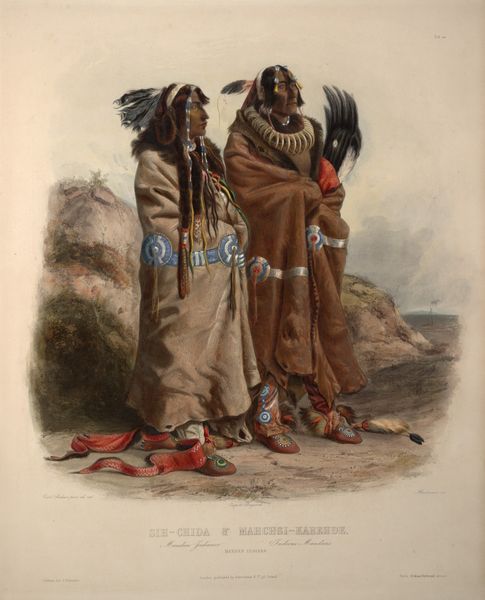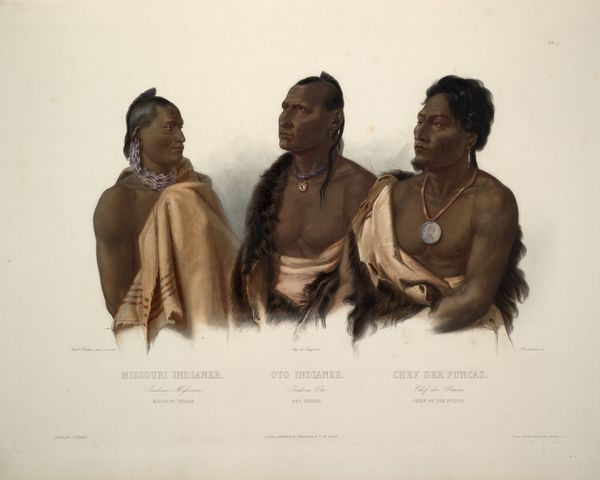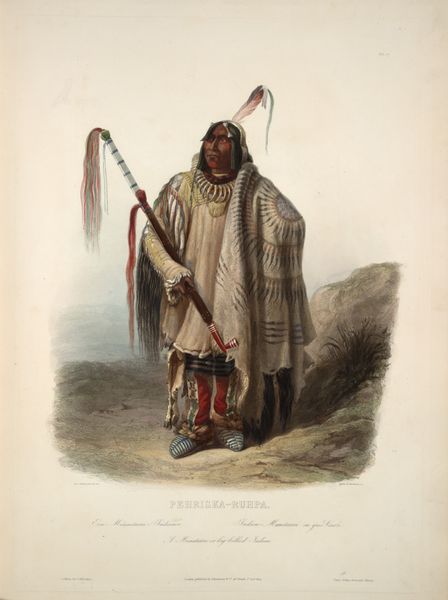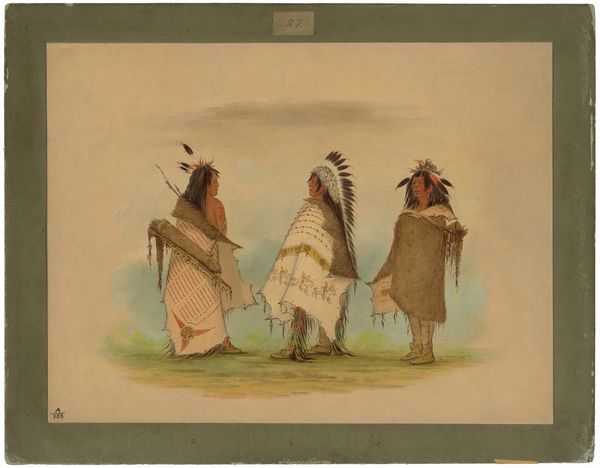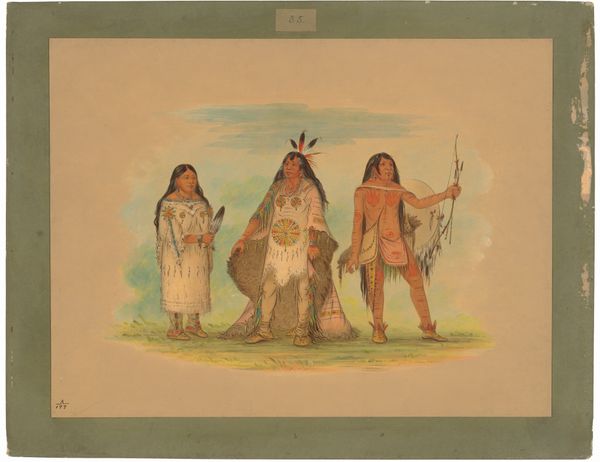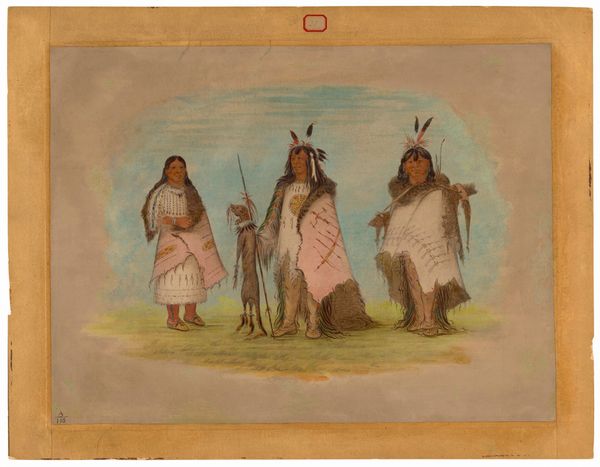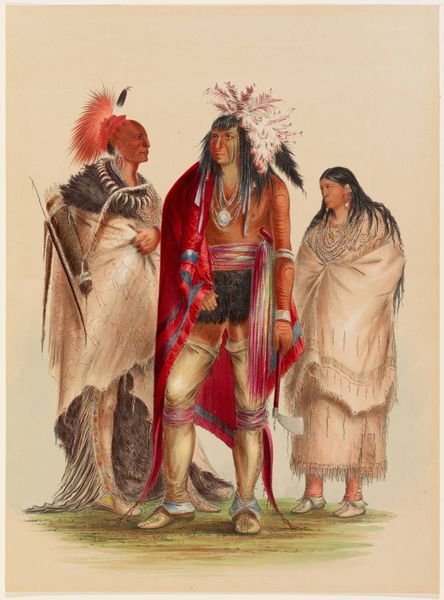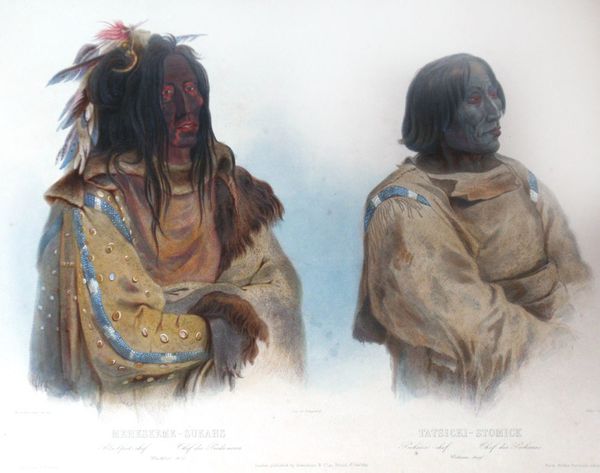
Woman of the Snake tribe and woman of the Cree tribe, plate 33 from Volume 1 of 'Travels in the Interior of North America' 1832
0:00
0:00
lithograph, print
#
portrait
#
lithograph
# print
Copyright: Public domain
Curator: Here we have a print dating to 1832, from Karl Bodmer's "Travels in the Interior of North America." It depicts a "Woman of the Snake Tribe and Woman of the Cree Tribe." Editor: My first impression is of a rather stark juxtaposition. The subdued palette lends a somber, almost documentary feel. Curator: It’s a lithograph, a process that democratized image-making by allowing for relatively easy replication. Consider the societal function: Bodmer was illustrating a vanishing world, as defined by colonialist incursion, for a European audience. Editor: I'm drawn to the contrasting symbolic language. The Snake woman, with her draped shawl, speaks of subtle elegance, while the Cree woman’s beaded adornments around her face are powerful expressions of cultural identity. Look closely at the complex patterns. Curator: Exactly. Think about the labor involved. These beads weren’t just purchased; they represent skill, trade, and the economic relationships of the time. What were the trade routes? Who controlled the materials, and how does this shape the representation itself? Editor: There’s a striking sense of dignity about these women. The symbols convey more than just social roles, but a deep connection to ancestry, their faces betray wisdom accumulated through experience. Curator: And experience often intertwined with displacement and marginalization. This lithograph highlights the complex relationship between artistic representation and social agency. The act of documentation becomes fraught with colonial baggage. Editor: It begs the question: Who controls the narrative? What does it mean to view indigenous cultures through a European lens, given its history? These symbols persist but do their original meanings get blurred? Curator: Perhaps that is the enduring strength here; that regardless of the framing, certain material choices and traditions continue to bear witness, reminding us of both immense loss and unwavering resilience. Editor: Precisely. In observing these iconic representations and the ways they endured, perhaps we can find opportunities for nuanced cultural awareness.
Comments
No comments
Be the first to comment and join the conversation on the ultimate creative platform.
